Congratulations to all Iranians on this auspicious occasion of the 40th anniversary of the victory of the Islamic Revolution in Iran. Having escaped the clutches of domination by the United States by toppling the US-installed despot was a grand accomplishment in itself, but having maintained the majestic momentum of the Islamic Revolution for 40 years despite the most intensive economic, political and military subterfuges and plots of the enemy aimed at regime change is something truly above and beyond the norm.
With Iranophobes holding top positions in the Washington regime, the pressure upon Iran seems as high now at it was during the Sacred Defense years, when headlines of the imminent collapse of the revolutionary government were the daily fare in the western media. John Bolton, Trump’s national security adviser, whose anti-Iran venom seems to be unbounded, declared before a conference of the despised terror cult, Mujahedin-e-Khalq, that “before 2019, we here will celebrate in Tehran!” Predictably, that did not happen, and it will not happen, insha’Allah.
And one of the reasons the best efforts at regime change by the enemies of the Islamic Republic have always failed and will always fail is the spirit of resistance demonstrated by the Iranian women over the course of history. As stated clearly by the late Imam Khomeini (RA) in the epigraph, it was the women rather than the men who were primarily responsible for the victory of the Islamic Revolution in Iran. And Leader of the Islamic Revolution Ayatollah Seyyed Ali Khamenei concurs. “I have pointed out on many occasions that in my meetings with the families of our martyrs,” he stated, adding, “I have often found mothers more courageous and more resistant than fathers.”
Likewise, during the long war with the Ottoman Turks in the Safavid period, it was the women of Iran who came out on the roofs of their homes to pour boiling water on the heads of the Ottoman soldiers. In the Qajar era, the women came out in mass to demonstrate against Naser al-Din Shah’s tobacco concession to Great Britain; even his wives smashed hookahs in protest. Moreover, the shah’s most influential wife, Anis al-Dowleh, helped spread the riots. Zinat Pasha from Tabriz led a group of armed, veiled women to the bazaar to protest the tobacco concession.
During the constitutional revolution, the women not only were participants, but also transformed the movement from a purely political one in 1906 into a genuine social revolution. Women not only formed organizations to further their education and enfranchisement, but also participated in demonstrations, street riots, boycotts and armed clashes in support of the constitutional movement alongside their male revolutionary counterparts. At one point, a group of women actually stopped the royal coach and warned its occupant, Mozaffar al-Din Shah, that “if Russia and England support you, upon the orders of Muslim leaders, Iranians will declare jihad against you.”
In 1911, when Russia had occupied parts of northern Iran and threatened the occupation of Tehran, it was the women who met in the mosques and planned an armed revolt while the men in the Majlis debated on what to do and the royals seemed inclined to submit to Russian demands. Three hundred veiled women, with pistols hidden under their chadors, burst into the Majlis chambers and threatened to shoot any deputy who caved in to Russian pressure. The American treasurer general, William Schuster, corroborated the story, confirming that the women “exhibited threateningly their revolvers, tore aside their veils, and confessed their decision to kill their own husbands and sons, and leave behind their own dead bodies, if the deputies wavered in their duty to uphold the liberty and dignity of the Persian people and nation.”
Following World War II, the CIA-engineered overthrow of Prime Minister Mohammad Mosadegh in 1953 and Reza Pahlavi’s 1963 program of westernization known as the White Revolution, much protest against the shah and his policies began to materialize. By the mid-1970s, Iranian women were adapting Islamic dress in protest of the shah’s regime. “Women who had worn Western clothes and enjoyed Westernized lifestyles joined their more traditional sisters in donning the chador as a symbol of protest,” wrote scholar John Esposito.
By 1978 chador-clad bazaari women were becoming more numerous than students during the anti-regime demonstrations, which were being ever more violently suppressed by the shah’s security forces. “As the threat of violence grew,” scholar Nikki Keddi pointed out, “women often marched bravely at the head of the processions; participants recognized that this put the police and regime in a difficult position.” To underscore the Islamic, anti-shah and anti-western symbolism of the Hijab, women wearing full chadors took to the streets in support of Imam Khomeini, chanting, “Khomeini-ye Azizam Begu Barat Khoon Berizam,” meaning “My beloved Khomeini, tell me to shed blood for you.”
It is arguable that the most important moment for women in the history of Iran came with their participation and involvement in the Islamic Revolution. “For the first time in the history of the modern Middle East,” Hamideh Sedghi noted, “millions of Iranians – veiled and unveiled women, organized and unorganized, secular and religious, rich and poor, and old and young – participated in a revolution.”
Women assumed roles of great importance during the Islamic Revolution and following its victory. Among the most notable are Masoumeh (Nilufar) Ebtekar, who rose to prominence as the spokeswoman for the students involved in the takeover of the US Embassy, Student Followers of the Line of the Imam (Daneshjuyan Peyro Khat-e Imam). She is currently Vice President of Iran for Women and Family Affairs and was the first woman to hold a cabinet seat in the Islamic Republic. Also noteworthy was Monireh Gorji, the only woman who was elected in the summer of 1979 to the 73-seat Assembly of Experts that drafted the constitution for the Islamic Republic of Iran.
Of course, through the distorted lens of western scholarship, Mohammad Reza Shah tends to be viewed as a benevolent promoter of women’s rights. For example, the so-called Family Protection Law of 1967, later revised in 1975, is held up as an example of the shah’s desire to promote Iranian women’s rights. Lauding her brother the shah, Ashraf Pahlavi went so far as to declare, “Equality between women and men has been truly realized under the laws of my King brother.” However, in an interview with Italian journalist Oriana Fallaci, Mohammad Reza Shah revealed his true misogynist feelings about women and their place in society. “Women are important in a man’s life only if they’re beautiful and charming and keep their femininity,” conceded the shah, adding, “You’re equal in the eyes of the law but not, excuse my saying so, in ability.”
When Iraqi dictator Saddam Hussain launched his unprovoked attack on Iran on September 22, 1980, women came forward to defend the fledgling Islamic Republic in great numbers, training as guerrilla fighters, regular soldiers, auxiliaries, nurses and cooks for the war fronts. Hamideh Sedghi explained that “the newly mobilized women became the status symbol of the revolutionary era, in contrast to the Westernized and unveiled women who had been the status symbol under the monarchical state.”
And the momentum of the Islamic Revolution has continued to today, with Iranian women as its beneficiaries. During the time of the shah, Iranian women may have been technically free of certain alleged restrictions on their behavior, but in reality, powerful social forces prevented most women from pursuing educational opportunities. Today under the Islamic Republic, Iranian women have been able to enter technical and professional fields in numbers and yet have been able to maintain family life. For example, by law, Iranian women are guaranteed six months of maternity leave plus one hour paid leave per day for 18 months, something that not only exceeds International Labor Organization standards, but also is absent in many western countries and, in particular, the United States.
And while the women of Iran, due to their contributions towards the victory of the Islamic Revolution in Iran, made great progress, they were not alone. The goal of raising the standard of living for the lower classes, the underprivileged and impoverished, the Mostazafin, was not mere revolutionary rhetoric, but rather was achieved in many areas such as access to education and health services. Conversely, westernized elites who were privileged under the shah were brought down or marginalized. Thus the Islamic Revolution in Iran was a true social revolution, and not merely a reshuffling of political figures or a reaction to American global arrogance.
While the west continues to focus upon the Hijab as a symbol of the repression of women, the women themselves continue to be the main force behind the propagation of the Islamic Revolution. “A nation whose women enter the arenas to battle with the superpowers and confront satanic powers ahead of the men will be victorious,” declared Imam Khomeini in August of 1980. As the Washington regime unleashes its latest attempts at thwarting the spread of the Islamic Revolution, which is now 40 years stronger than it was when Imam spoke the above words, the arrogant American leaders would be well advised to beware of the power of Islam and Iranian women.
MNA/TT










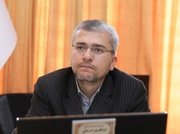
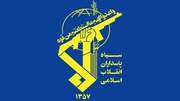


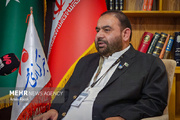

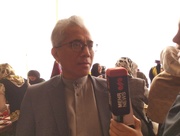
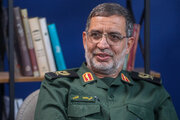



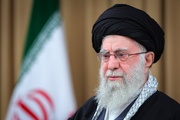


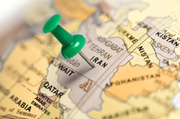
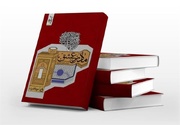
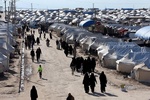
Your Comment